IVPower, NetCeler’s modular software for power system monitoring, automatically gathers and processes COMTRADE files and other fault-related data. However, all Automated Fault Analysis applications rely on an efficient collection of disturbances from the substations. That’s why NetCeler, with its 20 years of experience in AFA and a recent ISO 27001 certification, supports its customers with the most suitable Remote Acquisition System (RAS), taking into account both the equipment in place and cyber security constraints.
Record collection from the DFR
In this architecture where a Digital Fault Recorder (DFR) is already present in the substations, the RAS can rely on a system supplied by the IED manufacturer, communicating with the DFRs’ either in a proprietary format over TCP/IP or even PSTN. A file structure is created and made available to IVPower through IT protocols like SMB, CIFS, FTP or, even better, sFTP. Most recent fault recorders now allow a direct interface to their records, mainly through sFTP or MMS File Transfer on IEC 61850.
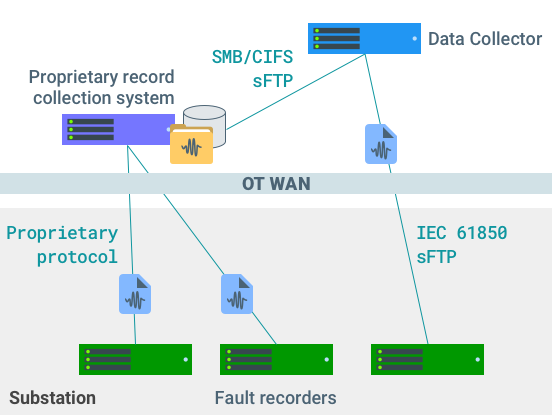
Record collection from the protection relays through the SAS
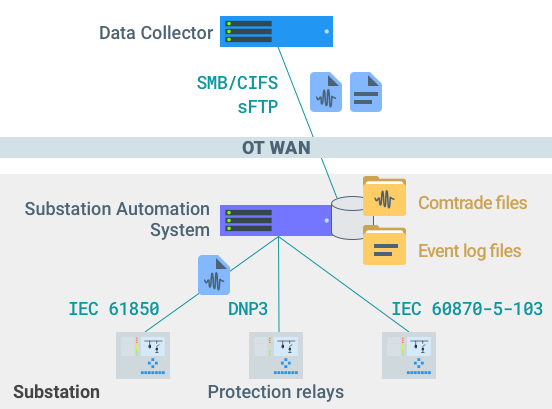
A Substation Automation System (SAS) integrates both monitoring and control activities in the substation, communicating with the relays on various protocols, e.g. DNP3, IEC 60870-5-103 and IEC 61850. The SAS can retrieve the fault records produced by protection relays using these protocols. SAS can also manage event logs, which can be exported as text files. The fault data files can be retrieved by the means of standard IT protocols.
Record collection from the protection relays through the RTU
In substations without SAS, Remote Terminal Units (RTUs) may be used to retrieve fault data. The RTU must be able to retrieve records from the IEDs using protocols such as 61850, DNP3, or 103; then, the RTU makes available such fault data through common OT protocols like IEC 61850, IEC 60870-5-104, or IT protocols such as sFTP or MQTT; finally, the Utility allows the AFA system to access fault data from the RTUs.
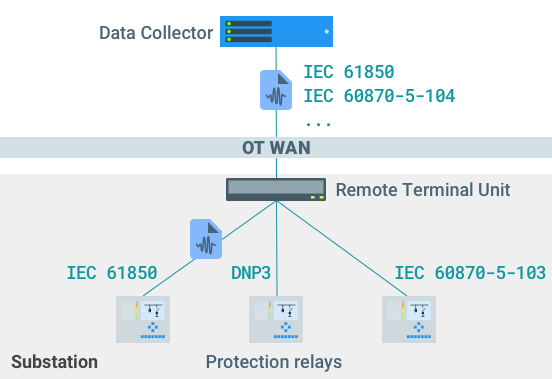
Record collection from the BCUs
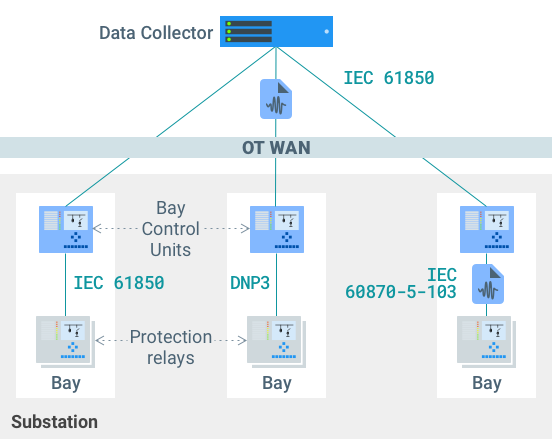
In this common architectural configuration, control activities are concentrated at the bay level. Bay Control Units or BCUs’ may be capable of collecting fault records from protection relays, making them available to the RAS above, through a IEC 61850 MMS interface. Each BCU must carry a unique IP address, seen from a network central point; an IP address translation is necessary, otherwise.
Record collection from protection relays
In many recent substations, all protection relays have an active IEC 61850 MMS interface, making it technically possible to retrieve fault records directly, through this protocol. Each relay must carry a unique IP address, exactly as for the BCU example.
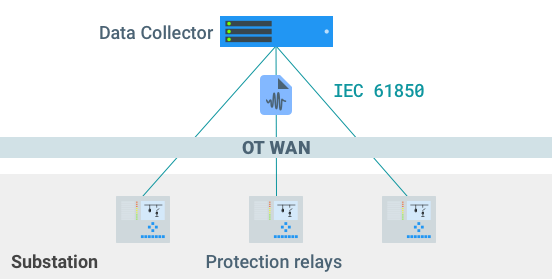
Record collection from a dedicated gateway
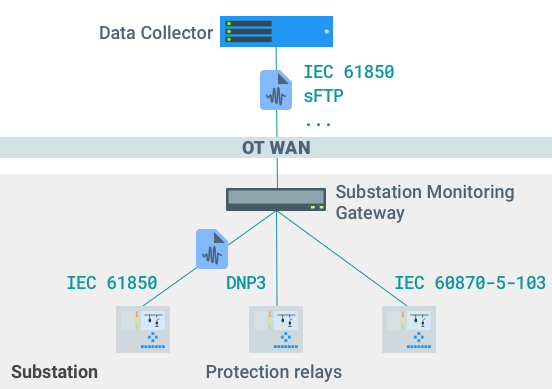
Sometimes direct access to the IEDs from outside the substation is not possible due to cyber-security policies, or because the protection relays only support IEC 60870-5-103 and there’s no available SAS or RTU performing data collection.
If so, NetCeler can provide gateways selected from its partners to be installed within the substation either as an industrial hardware package or as a software running in a virtual environment in the substation if available. These gateways generally support a wide range of OT and IT protocols, both for communication with the IEDs and with a data collector.
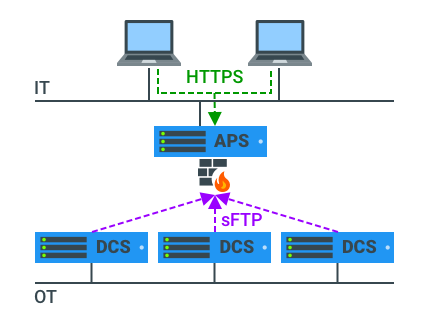
Secure RAS multi-server architecture
IVPower provides native IEC 61850 drivers which run on data collector servers (DCS) located between OT and IT. A single APS DCS can support up to 1,500 IEDs.
Once collected on the OT side, data is pushed to the IVPower application server (APS) located in the IT data centers, either through a secure sFTP connection, or by the means of the customer’s MFT (Managed File Transfer)


